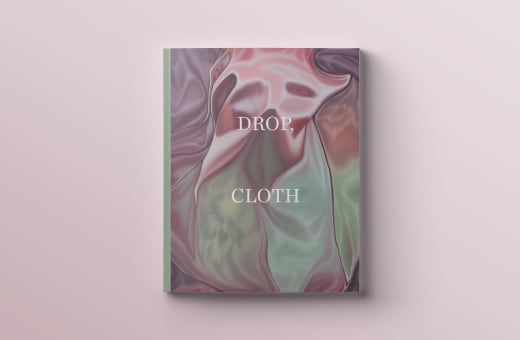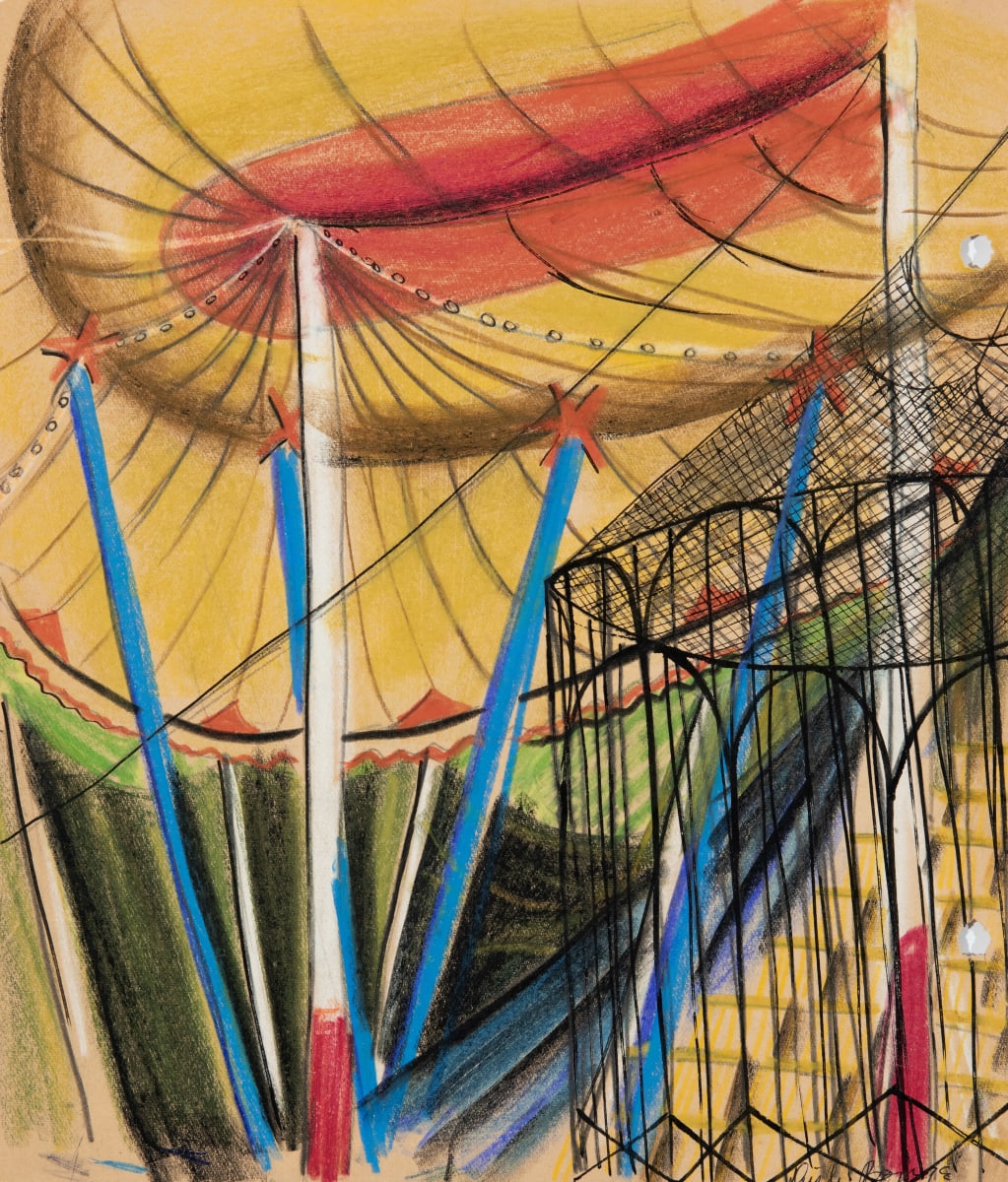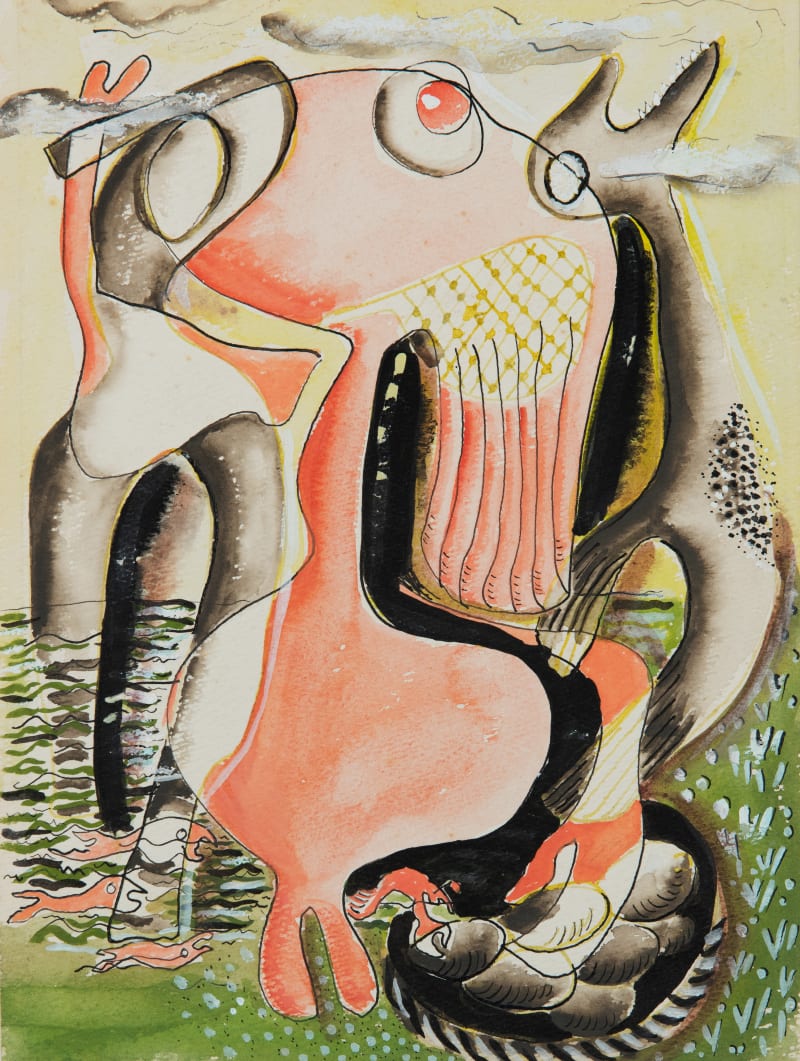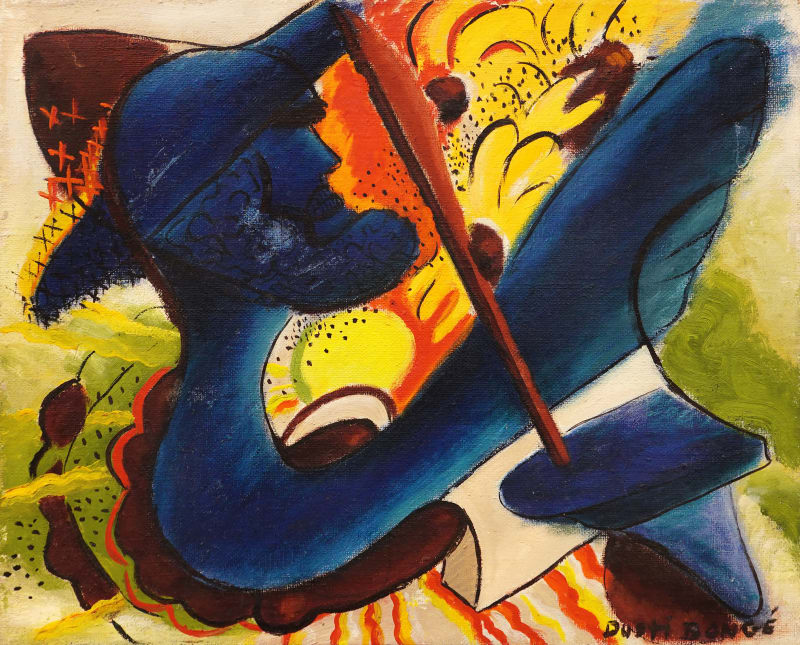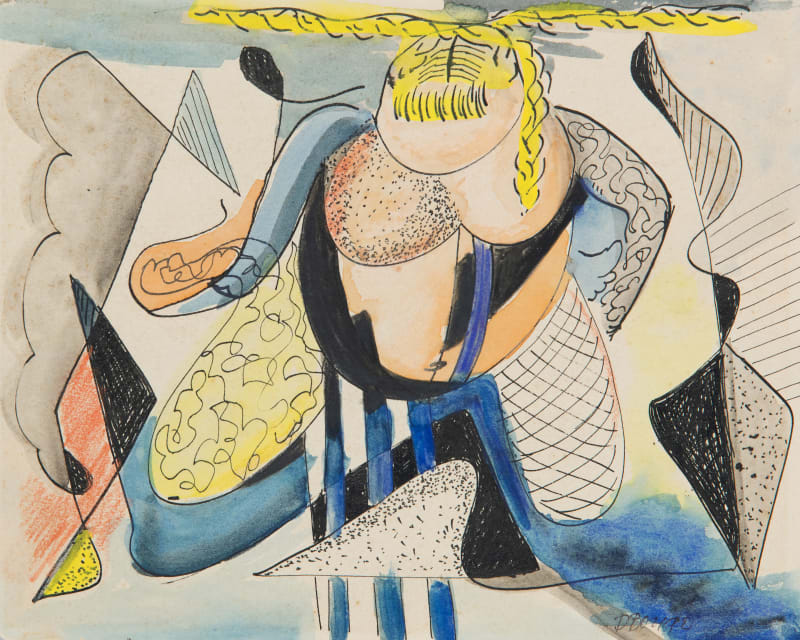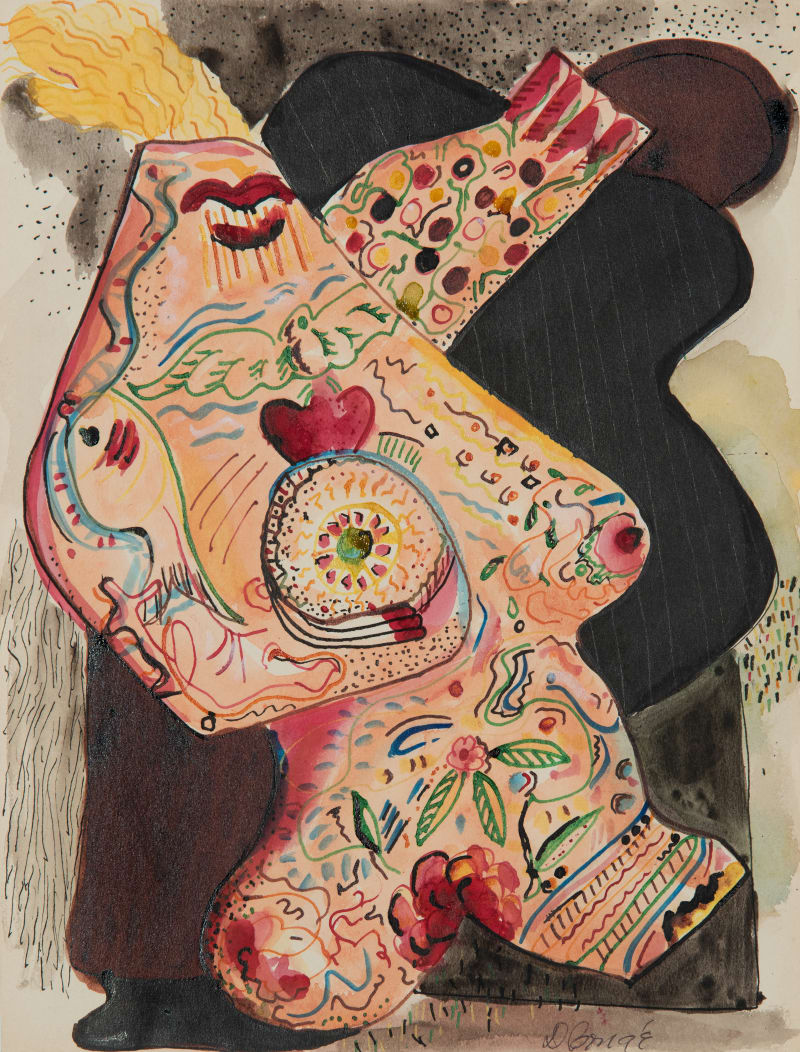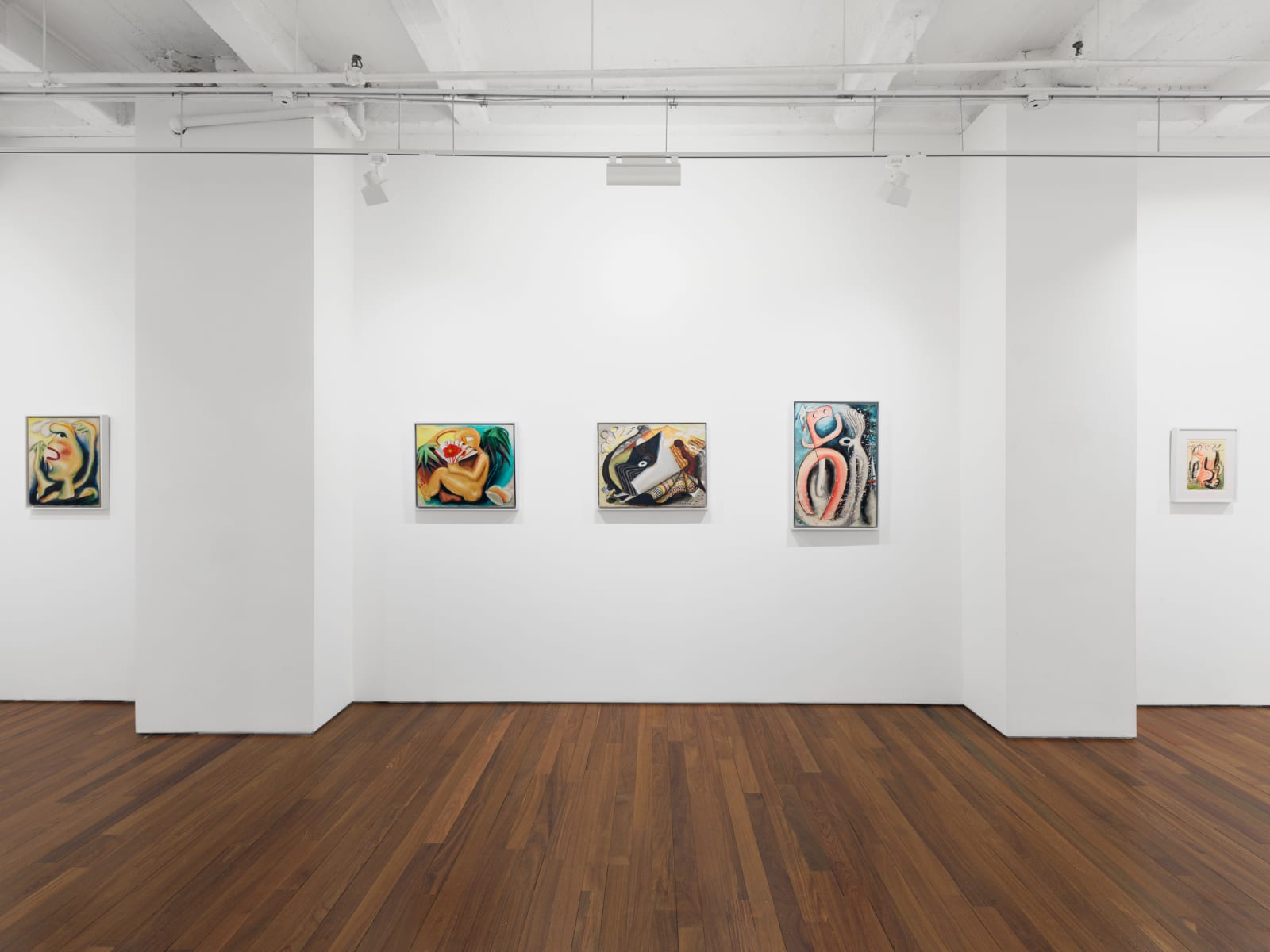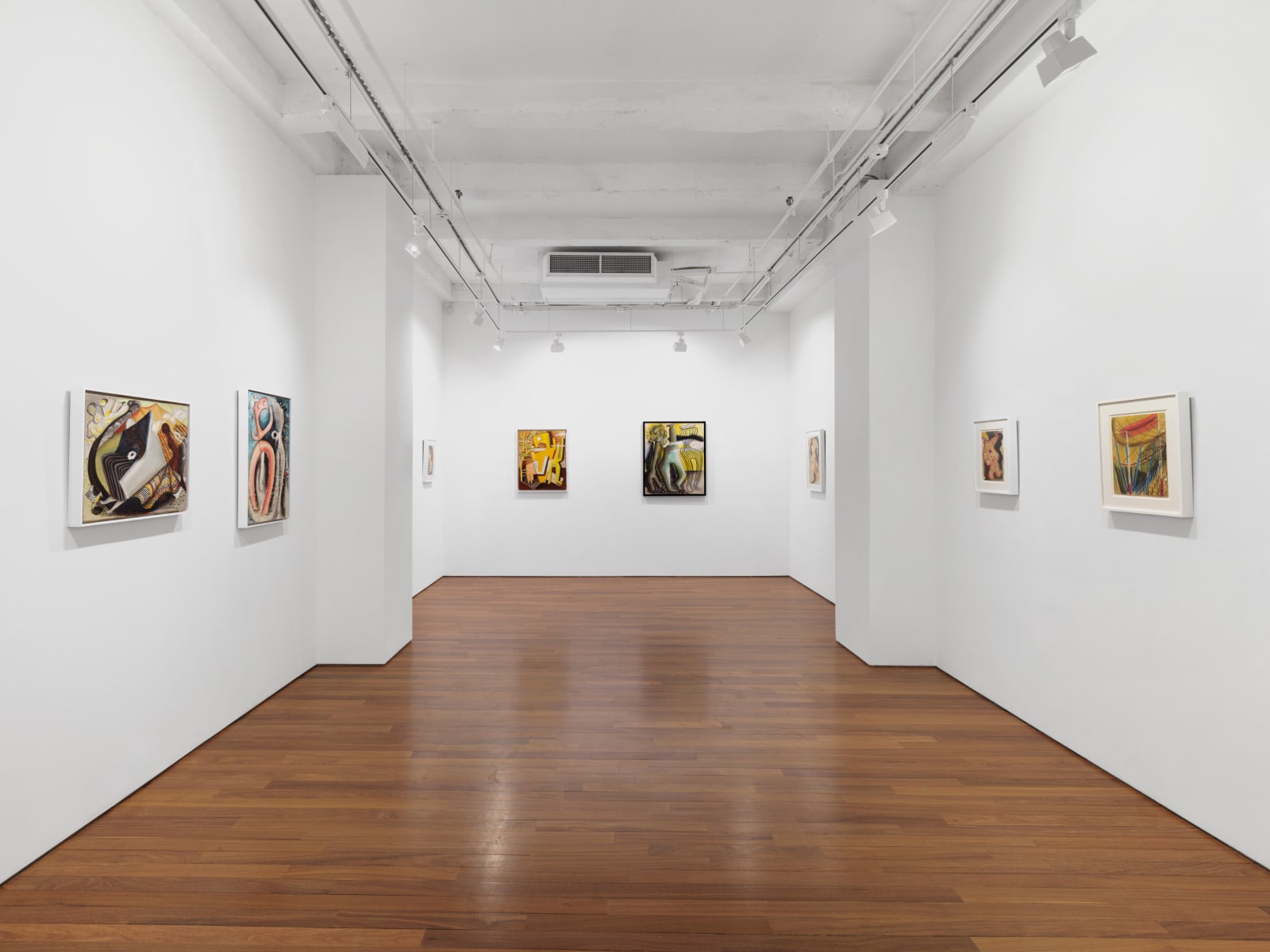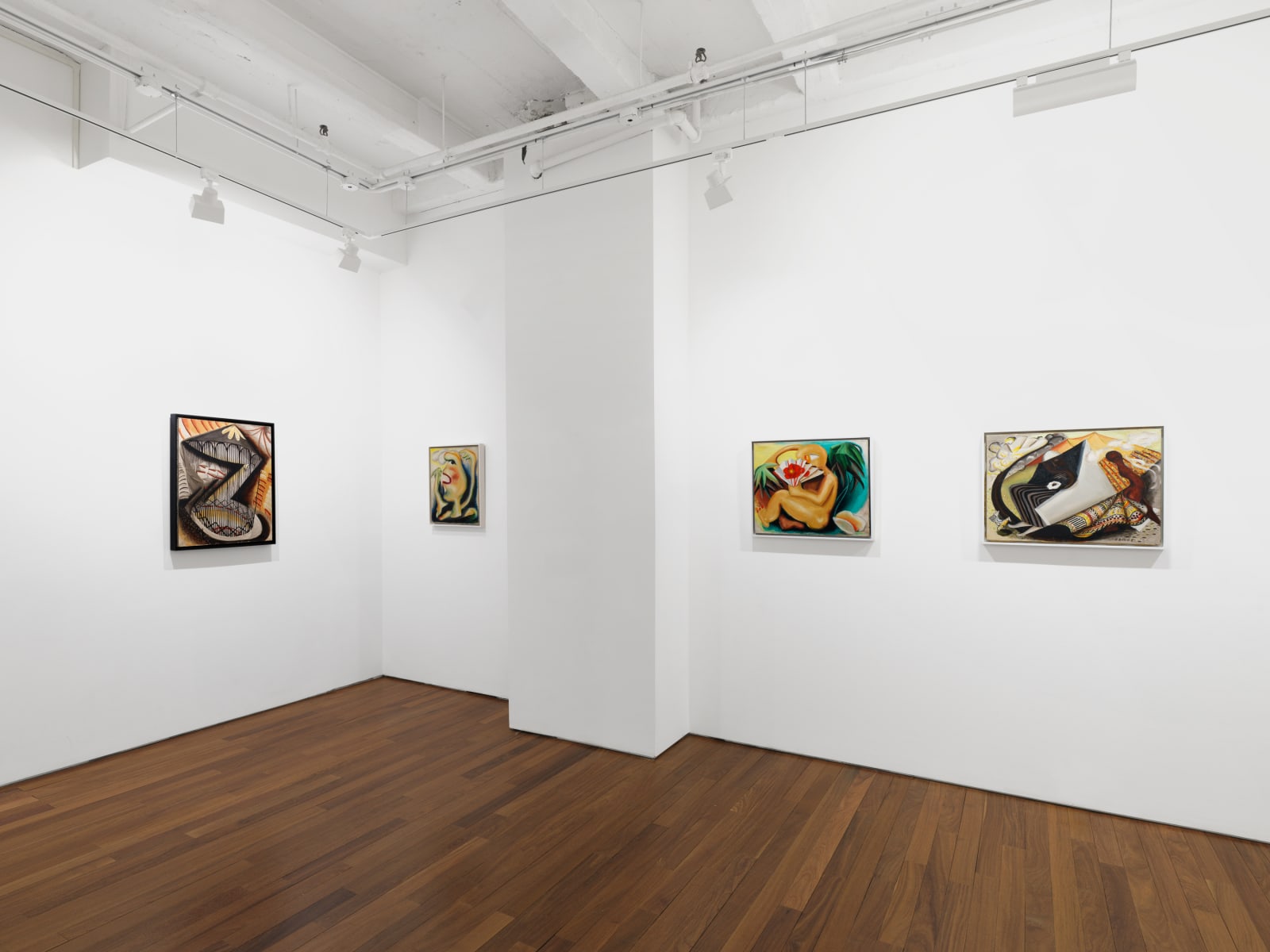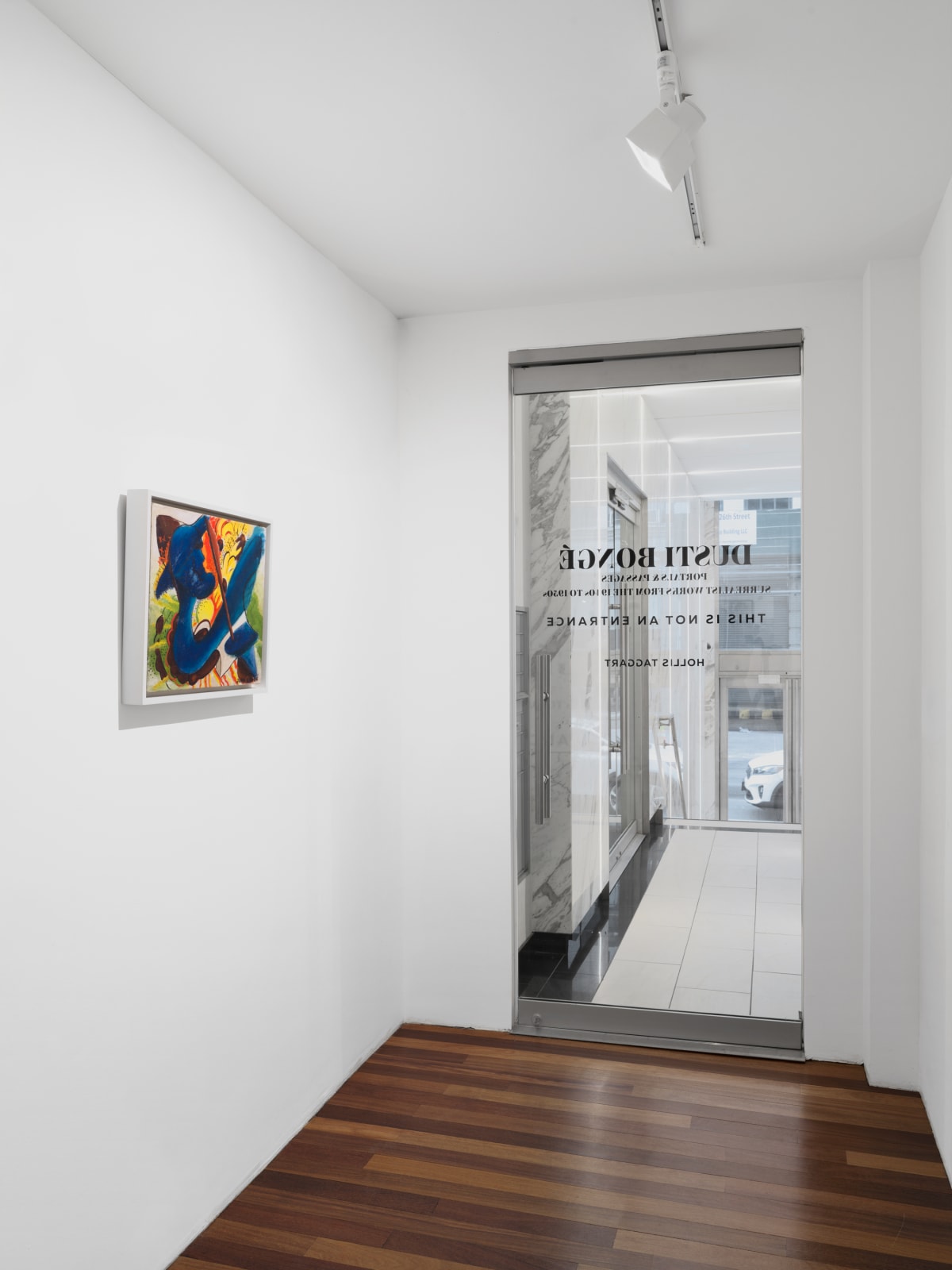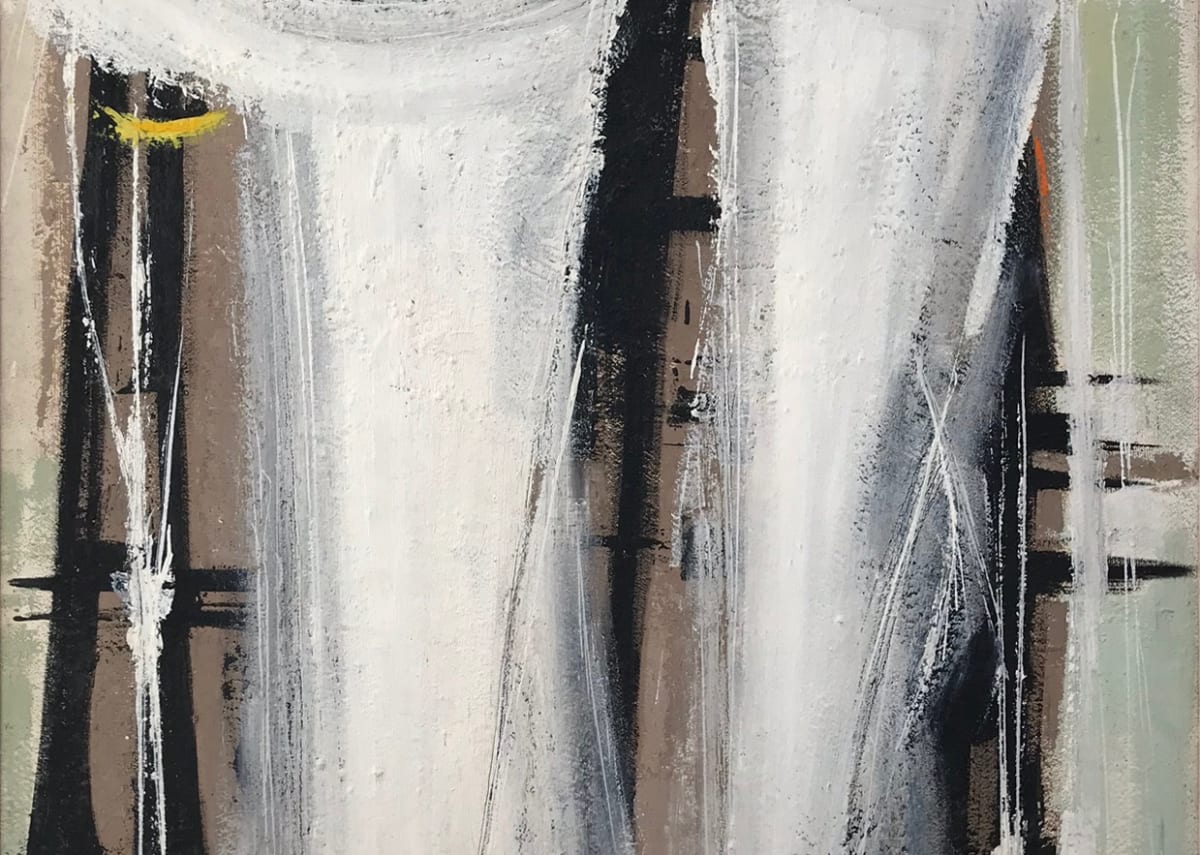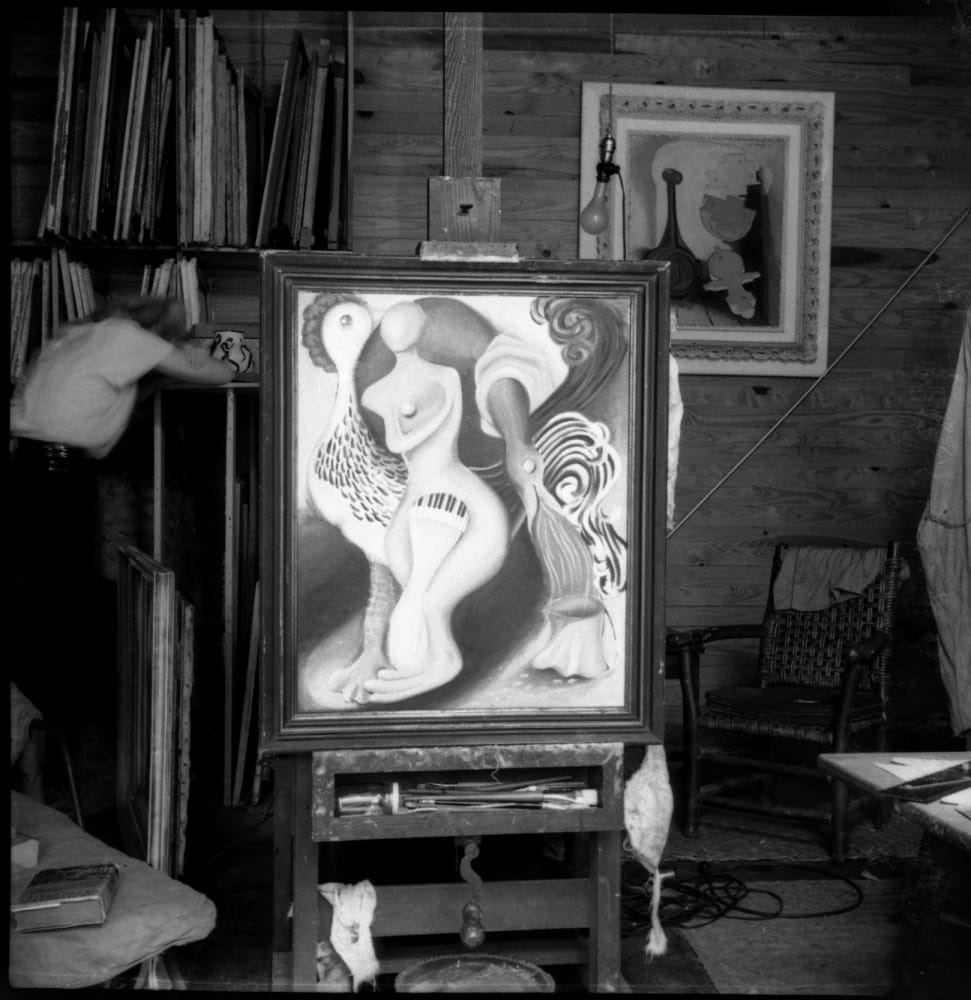
Rather than the automatist techniques of Bretonian surrealism that privileged unconscious mark-making, Bongé was more interested in the surrealist imagery of dreams.
Hollis Taggart is pleased to present a focused exhibition of the artist Dusti Bongé’s surrealist works. A deeply intuitive painter long represented by the Betty Parsons Gallery as well as Mississippi’s most acclaimed modernist artist of the post-war era, Bongé (1903-1993) fused the influences of the New York School with colors and forms inspired by the overlooked “third” coast of the U.S.—the Gulf Coast. Featuring fifteen paintings from the late 1930s to early 1950s, this exhibition spotlights how Bongé’s surrealist works served as a crucial bridge between her early figuration to her later, more well-known, abstract style. Dusti Bongé: Portals and Passages, Surrealist Works from the 1940s to 1950s will be on view on the first floor Annex of Hollis Taggart from January 9 through March 15, 2025, with an opening reception on Thursday, January 9, from 5-8PM.
Rather than the automatist techniques of Bretonian surrealism that privileged unconscious mark-making, Bongé was more interested in the surrealist imagery of dreams. The artist often dreamt canvases so vivid and complete that she immediately woke to paint them in the middle of the night. “In one show with the Betty Parsons Gallery,” Bongé later recalled, “I had at least five ‘dream’ pictures. At any time I kept small canvases on my easel, which was close to the bed. If I happened to dream a painting I would then be able to get up quickly and paint it, before it was lost.” Like many other New York artists during the 1940s, the theories of Freud and Jung additionally informed Bongé’s thinking about the role of dreams in creative practices.
These works display the rich range of sources that undergird Bongé’s surrealist imagery. Besides the artist’s own dreams, such sources include circuses and coastal fishing activities she knew from daily life in Biloxi, Mississippi. Bongé also developed a distinct vocabulary of “keyhole people”—characterized by elongated forms and holes or portals for faces that suggest passages into other worlds—that capture her formidable sense of wonder, even in the face of unexpected tragedies such as the death of her young husband in 1936 when she was thirty-three years old. Bongé learned to build an artistic career as a single mother at a time when servitude to family was expected to override any personal ambitions for women.
Despite her close relationships with the members of the New York School, including Theodoros Stamos and Mark Rothko, Bongé has been obscured in the discourse of post-war American art, no doubt partially due to her decision to leave New York and return to Biloxi to raise her son. In recent years, owing to museum retrospectives and rigorous scholarship, Bongé’s work has regained the level of attention that it received midcentury when she was an active artist. Committed to highlighting the work of underrecognized artists, Hollis Taggart is thrilled to share with the public this trailblazing modernist painter and her singular contributions to American art.
Born in 1903, Dusti Bongé grew up among the natural beauty of a Southern coastal city of Biloxi. After graduating from Blue Mountain College in Mississippi in 1922, she moved to Chicago to pursue a career as an actress. Following her husband Archie’s death in 1936, in search of a new direction, Bongé began developing her own career as professional painter, while raising her son Lyle, who was then seven years old. In the 1950s, Bongé became an important point of connection between the New York and New Orleans artistic communities. Over the course her career, she exhibited in numerous group and solo exhibitions. After having her first solo exhibition at Betty Parsons Gallery in 1956, she went on to have four more shows there, with her last one in 1975. She was one of the pioneering women artists represented by the Betty Parsons Gallery alongside Judith Godwin, Perle Fine, Agnes Martin, Anne Ryan and Hedda Stern. It was also during this period in the 1950s that Bongé’s brushstrokes became more gestural and her abstract expressionist style emerged, bringing together aspects of cubist structure, surrealist imagery, and subtle references to the shapes, light, and flora and fauna of Biloxi and New Orleans.
Following her death, Bongé received major retrospectives at the Walter Anderson Museum of Art, Mississippi (1995 and 2013), Mobile Museum of Art, Alabama (2006 and 2023), and the traveling exhibition Piercing the Inner Wall: The Art of Dusti Bongé organized by the Ogden Museum of Southern Art (2019-21). Recently in 2023, her work was included in the critically acclaimed exhibition Action, Gesture, Paint: Women Artists and Global Abstraction 1940-1970 at the Whitechapel Gallery in London. Bongé’s work is in the permanent collections of the Museum of Modern Art, New York; Mississippi Museum of Art; Ogden Museum of Southern Art in New Orleans; Mobile Museum of Art; Morris Museum of Art in Augusta, Georgia; University of Southern Mississippi Art Museum; Walter Anderson Museum of Art, among others.
We especially thank the Dusti Bongé Art Foundation (DBAF) in Biloxi, whose tireless efforts have made retrospective exhibitions and cataloguing of Bongé’s work possible. In 2025, the Foundation will celebrate 30 years of promoting the legacy of this important artist.
For more information about Dusti Bongé: Portals and Passages, Surrealist Works from the 1940s to 1950s, please contact us at info@hollistaggart.com or +1 212.628.4000.
For press inquiries, please contact Aga Sablinska at aga.sablinska@gmail.com or +1 862.216.6485.
Artworks
Installation Views
News





